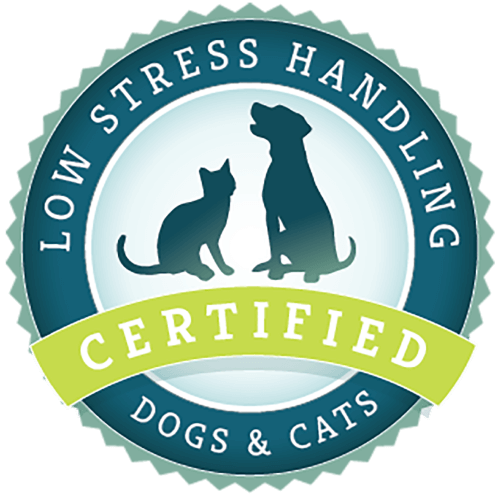What article are you looking for?
Category: General Information
Low Stress Emergency Care — Is it possible? Yes!
In this article I will address what techniques help reduce stress in emergency care, how you can achieve patient cooperation when you do not have the ability to use food rewards, address staff safety, and why the experience in an emergency setting affects an animal for all veterinary care.
Are You in a North/South Workplace?
For some workplaces, changing animal care to a Low Stress culture has been an exciting change, with clear objectives and training. For other, a divide has erupted as Low Stress Handling™ techniques are resisted by some of the staff. As a speaker and writer promoting positive veterinary exams, I hear the frustration from those who experience the benefit of Low Stress Handling and find resistance to changing handling practices at their workplace. I want to share some insight into this problem and a few solutions.
Bite/Near-Bite Job Stress Poster Presentation at AVMA Convention in Indianapolis
At the end of July 2017, I attended the American Veterinary Medical Association Convention in Indianapolis, IN. This was pretty exciting for me as I was selected as a poster presenter for my survey “Once Bitten, Twice Shy – Bite/Near-Bite Job Stress in Veterinary Medicine.” In addition to the poster presentation, I was also selected to lead a round table discussion on the same topic. Last summer (2016), I proffered a 10-question survey to a number of veterinary groups. This was an effort to gather data on job stress due to bite and near-bite injuries in small animal practices. As
Highlights from the Veterinary Behavior Symposium – Indianapolis, IN, July 20, 2017
Last weekend I attended the Veterinary Behavior Symposium – the conference of the American College of Veterinary Behaviorists – held in conjunction with the American Veterinary Medical Association’s annual convention in Indianapolis, IN. CattleDog Publishing co-sponsored the symposium and our booth was well attended. It was great to see so many of my friends and people who supported Dr. Yin in her writing and publications at this meeting. What I always like about this meeting is the variety of presentations focused on advancing the science of animal behavior. Residents in veterinary behavior, veterinary behavior specialty technicians, and research scientists from
The Hidden Wounds of Our Canine Veterans – PTSD in Military Canines
I recently saw the movie Megan Leavey, a film about the real-life story of Marine Corporal Megan Leavey and her canine military dog, Rex, who worked together in Iraq. The movie focuses on Megan’s journey from boot camp to canine handler where she is assigned Rex. During their training and tour of duty in Iraq they are able to forge a bond which helps them to be successful at detecting weapons and explosives. On one particular mission, they both suffer injuries and are sent back to the United States for treatment and rehabilitation. Meghan, who has elected to not re-enlist, seeks
Low Stress Handling University – Official Launch
It’s Here!!! It’s Finally Here!!! You’ve been waiting months for it and now the Low Stress Handling® University is finally open to the public. After 2 months of watching and slicing videos (at least 4 – 5 times each), editing every word and sentence, planning color schemes, developing course organizations, designing curriculums to put those courses into, and running through every setting in the system at least 50 times, not to mention the nearly than 1,000 hours that it took to do all of this, we are proud to present the Low Stress Handling® University. LSHU-Student-Dashboard The Low Stress Handling® University (a service of CattleDog Publishing), is

Low Stress Handling® Silver-Level Certification
Individual Certification at this level demonstrates to clients and employers the individual’s dedicated interest in Low Stress Handling®. Hospital Certification at this level demonstrates to clients and staff the hospital’s commitment to appropriately training staff in Low Stress Handling® methods.
Learn More
